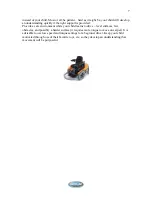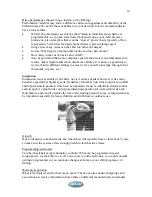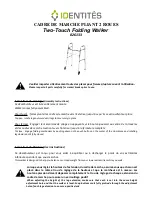
21
•
Mini joystick
This is pretty widely used among wheelchair users
with SMA. If there is not enough strength or range
present to use a standard joystick, the Mini may be
a very appropriate alternative. It provides full
proportional control (which is typically better, a
more natural way to drive), and also allows access
to all seat functions. Typically there is a need for a
switch of some kind placed somewhere the user has
consistent motion, which acts as a “mode” switch to change between driving,
speed change and power positioning/seat functions. Then, moving the joystick
left and right, up or down will activate those functions and/or change the
speed.
The user needs very little force and very little range to activate this joystick –
in less than ¼” displacement you can achieve full speed and get acceleration
and other variables for very accurate and refined driving. However, the user
needs to be able to move in all 4 quadrants.
This joystick minimizes fatigue and enables many users with SMA to drive
throughout the day. It is, however, quite fragile, so special care needs to be
taken when transferring in and out of the chair, etc.
It can be placed anywhere around the body, and is often used with a mid line
mount and good arm support.
•
Other proportional controls
There are other alternatives, such as touch pads (which looks and works like a
mouse pad on a laptop), and the Magitech (which is a small tilt sensor making
the chair move towards the direction of tilt). With the appearance and
popularity of the Mini, especially among people with SMA, their application
has been reduced.
Digital control
Digital control is also referred to as switch control. The opportunities are endless –
multiple switches and single switches of any size and shape. Switch control offers
movement in 4 distinctive directions, 90° apart (forward, reverse, left, right). It is a good
alternative if proportional driving is not possible – another alternative to achieve
independence in mobility and potentially computer applications. Some therapists prefer
digital controls as a training tool for first time drivers, assuming that it is easier to
understand directionality through their use. Keep in mind, however, that proportional
control provides a more natural (and usually faster) way of moving about.
•
Multiple switches
The most frequently used multiple switch control is a
head array. This device incorporates all switches into
the headrest, and it is the movement of the head that
controls the movement of the wheelchair. Most
children with SMA may find this option fatiguing.
Other switch controls available can be placed near the































